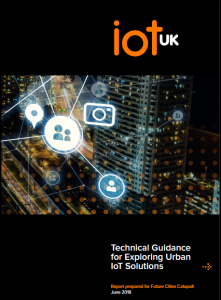Russ Curry, Ministry of New Media
Public authorities in urban areas need to plan for five steps in the deployment of projects involving the #IoT according to guidance just published as part of the IoTUK programme.
 This includes looking at public benefits, scale, the critical threshold, new infrastructure and automation – along with a reference to four common scenarios around planning and procurement of IoT technology.
This includes looking at public benefits, scale, the critical threshold, new infrastructure and automation – along with a reference to four common scenarios around planning and procurement of IoT technology.
The guidance was produced for IoTUK, a collaboration between the Future Cities Catapult and Digital Catapult, by Imperial College London and consultancy Vivid Economics. Titled ‘Technical Guidance for Exploring Urban IoT Solutions‘, it is aimed at providing public authorities looking at IoT procurements with a best practice framework focused on urban areas.
It says the first step is to look at the primary benefit to society of a project, especially what it would provide beyond what is delivered by the market. This is followed by considering the scale – making clear whether it is a pilot or large scale deployment – then assessing the minimum scale needed to obtain the benefits.
The latter can vary as some applications can be implemented in a modular fashion while others require a large scale roll out. The point is to identify whether it can deliver benefits at a small scale to individuals, a neighbourhood or district, or if it needs to be deployed city-wide.
You can download the report here.

Follow DailyDOOH